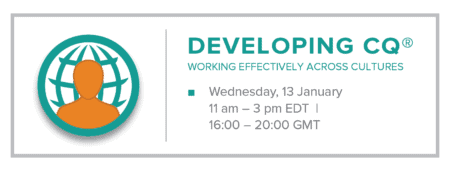This year, Fortune 1000 companies committed $66 billion to racial equity initiatives. Yet, with all the growth and investment, progress in advancing diversity, equity, and inclusion (DEI) work has been slow. The pandemic has only exacerbated the delays. In fact, according to a recent McKinsey report, only one in six diverse employees feels more supported now. Why? The problem is not commitment. It is execution. Organisations are struggling with how to do the work and produce the desired results. We know the work takes time. At the same time, it is reasonable to expect positive results along the way. So how do you manage expectations between patience and progress?
As your organisation works to finalize next year’s DEI plans and budgets, pause and consider how these CQ tips might influence how you determine and execute your DEI strategies.
Build from the Right Foundation
In a recent issue of the Harvard Business Review (HBR), researchers, yet again, found no empirical evidence that simply diversifying an organisation leads to change and improved performance. In fact, part of the reason for the dismal DEI results has been the faulty business case for diversity. For years, the case has been that more diversity equals improved organisational performance. But you can’t expect diverse groups to work together effectively and improve performance if they lack the skills to do so. Cultural intelligence (CQ) is the foundation that ensures your DEI efforts lead to meaningful and sustainable results. The same holds true for any attempt to create an equitable and inclusive organisational culture. Developing this foundation includes asking yourself the following:
- What does the data say? What kind of employee feedback are you receiving? How supported do your diverse employees feel? Perhaps you need to step back and conduct a more comprehensive assessment using the CQ Org Culture Inventory, a tool designed to assess your organisation’s CQ to provide insight about where you are on the DEI journey
- How will we measure progress? Use the data to inform strategies and execution. Then identify Key Performance Indicators (KPIs). One example of a KPI might be measuring the number of people of color or women in leadership roles. This year a number of companies began holding their leaders more accountable for DEI goals, including hiring and promoting underrepresented groups. It is just a matter of time before these expectations expand to more organisations. Another KPI could be assessing how well your policies support differently-abled employees. More broadly, you could commit to publishing a DEI Transparency Report by the end of 2021. This bold move has been adopted by a number of organisations and institutions such as PwC and Stanford University. It is the ultimate form of accountability. The bottom line — determine your metrics based on a data analysis of where you are and where you want to be. Check progress, at a minimum, on a quarterly basis.
PRO TIP: Are you new to Cultural Intelligence? If so, watch this short video explaining how Cultural Intelligence and Diversity work together to create better solutions.
Don’t Leave Your CDOs Hanging
In 2020, Chief Diversity Officer (CDO) was the fastest-growing C-suite title. This is a good step in the right direction. However, expectations for these roles need to be carefully managed. The CDO is not the organisational savior who comes with fairy dust and a magic wand to solve the organisation’s DEI problems overnight. Instead, their job is to leverage their expertise to develop and facilitate a strategic roadmap and process that develops buy-in and engagement at every level of the organisation. And they need full support from top leadership. What does this support look like?
- A straight line. Ideally, the experienced leader has a direct reporting line to the CEO or at least access to them. It is very challenging for a diversity leader to execute and have impact if the organisational structure undermines their influence and authority.
- Financial Resources. Funding the work with a generous budget is critical. Saying you value the work is not enough. No amount of verbal commitment can compensate for the financial support needed to implement and sustain the DEI work.
- Ownership across the organisation. It is still the responsibility of everyone to be invested in the DEI work. The DEI work at Dallas ISD, one of Texas’s largest school districts, is being led by the Racial Equity Office. But all the top-level district chiefs were expected to determine how their departments would support the DEI work and develop their execution plans.
In recent weeks, I’ve been speaking with a number of organisations whose DEI efforts are being led by a Diversity Council or a team of people that have very little to no experience in this space. They may have made a commitment to begin the work, and I commend them for that, but it is imperative that these teams move quickly to build the necessary skills to effectively lead and implement this work. Programs like The CQ® Leadership Academy, a 6-month, cohort-based certification program, are ideally suited to ensure these councils have the skills and plan to make a meaningful difference.
In the long-run, for DEI work to be lasting and scalable, you need to invest in a dedicated role to lead the work. It’s too important and complex.
Want to learn more about CQ? Take advantage of our end-of-year special on our live workshops in January! Get 20% off if you sign up before 12/31/2020. Click on the link above to learn more!
Pace Your Work
In the HBR article mentioned earlier, the researchers suggest four actions for leading a successful DEI effort — psychological safety, combating systems of discrimination, embracing the styles of employees from different identity groups, and making cultural differences a resource for learning and improving organisational effectiveness. In a nutshell, to make real progress, people and the organisational culture must change. We couldn’t agree more. These action steps align with our cultural intelligence research. But it’s a process that requires a lot of work. You don’t have to do it all at once. Pace yourself.
As a starting point, evaluate how successful you’ve been at addressing these four action items. Where have you made progress, and where are your DEI efforts weakest? For example, it is common for many organisations to focus heavily on individual learning and development activities such as training but neglect addressing systemic change. What progress have you made in combating potential systems of discrimination? One way to start is to assess the talent acquisition process. A few specific ways to do this include:
- Review your diversity numbers. Are you attracting, recruiting, and retaining diverse talent? What does the data tell you? If your compositional diversity numbers are weak, that is a problem. If your results are not what they should be, you may need to slow your recruitment efforts down.
- Check for Bias in the Process. Ask yourself, could there be bias in the hiring process? In addition to training your HR team and anyone involved in recruitment on CQ and Unconscious Bias, use tools like CQ Talent™ to help manage bias and discover the cultural values of diverse candidates. This same principle applies to your other DEI efforts.
At the Cultural Intelligence Center, we are excited about the year ahead. We have some promising solutions to support you on your DEI journey. Stay tuned for more about this in the new year! In the meantime, for those of you who celebrate Christmas, have a safe and peaceful holiday season, and we’ll see you next year!
Click on the links below to learn more about our new CQ® Leadership Academy program, or if you’re interested in getting CQ certified!
CQ LEADERSHIP ACADEMYGET CQ CERTIFIED
Sandra Upton, DSL serves as VP, Global Diversity Practice, and provides strategic direction for applying Cultural Intelligence (CQ) to DEI work across all segments and industries. She previously worked with schools and universities through her role as Vice President of Educational Initiatives. In addition, she’s a regular speaker, trainer, and consultant on cultural intelligence with companies and non-profit organisations. As a former business school dean and organisational consultant, Sandra understands how to effectively integrate CQ with organisations’ D&I initiatives and global leadership programs. She has also facilitated study abroad experiences in places such as China, Europe, Israel, and South Africa. Sandra finds her greatest pleasure in spending time with her husband and two children. She also enjoys travel, reading, watching a good film, and long walks.
Like what you’re reading? Sign-up below!



